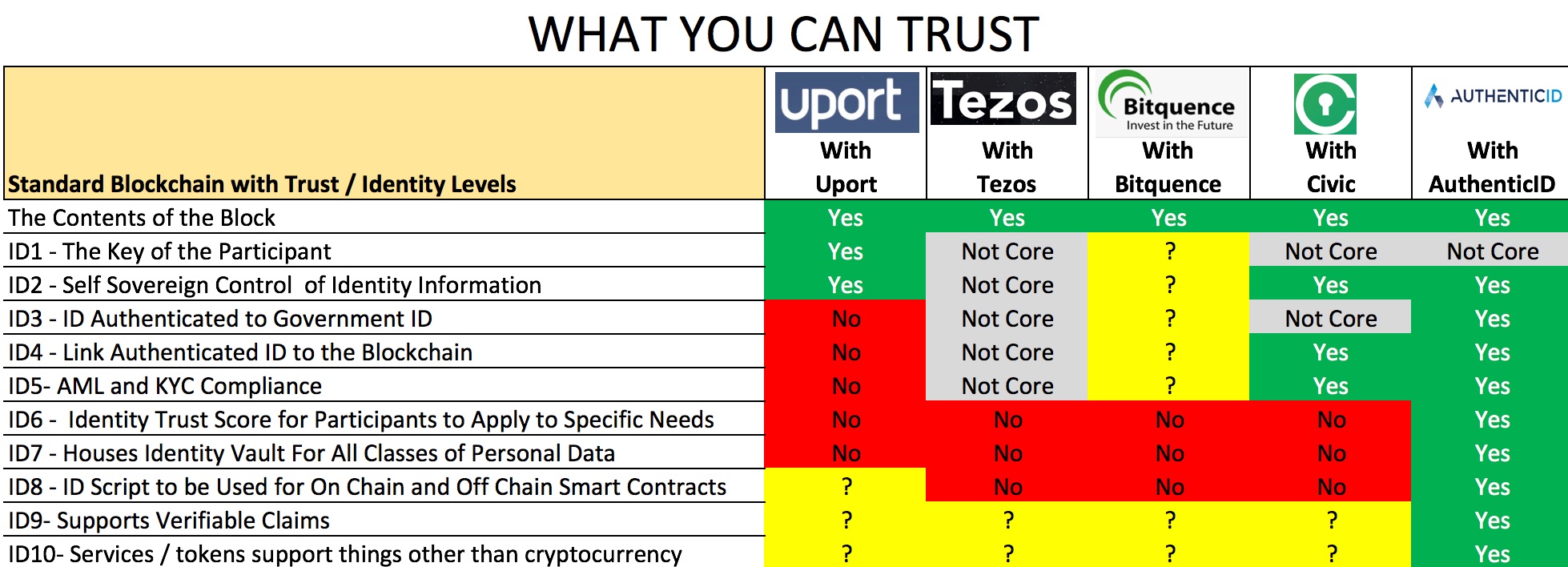After the recent SEC ruling about ICOs, we are scaling back our use of that term – so we are taking it out of the title of our blog as we think more companies will pivot to do a token offering instead of an Initial Coin Offering.
OK
Trust and identity are really broad terms and a lot of ICO/token offerings use these words as though they mean one very specific thing.
We think there are many types of trust and identity because there are lots of ways to use them. Whether you need to verify that someone is 21 years old to buy alcohol, or that someone is who they say they are (peer-to-peer) when selling a boat on a site like Craigslist, or whether you are trying to move cryptocurrency into US dollars into a bank account – those are all different use cases with different needs for trust and identity.
With Identity, some like the folks at UPort seem to associate that with an ID/Password, but to not actually link it a person with a government ID or any other variable information age, gender, address, etc. It looks like Civic will do that with the help of an authentication service and Tezos probably supports that in their smart contracts, but they don’t do that. That’s where things like self-sovereign, verifiable claims, attestations, and privacy go from being somewhat one-dimensional to taking on multiple dimensions.
Similarly with Trust – if you read William Mougayar’s “The Business Blockchain” which is great, he tells you blockchains are built on two basic concepts of trust and decentralization. While the trust is true for the block itself – there is nothing about trust of the individuals, the participants – which is part of the reasons banks and other organizations aren’t part of public blockchains – they can’t comply with anti-money laundering (AML) and know your customer (KYC) requirements.
To be clear – you can authenticate the identity of the participant of a blockchain through a trusted third party like AuthenticID, and still remain anonymous on the blockchain. You can also create a “handle” or nickname for yourself that’s tied to the authenticated ID and still be anonymous.
We aren’t saying anyone is right or wrong about Trust and Identity, as we get through various layers and levels of defining trust and identity, and who does what for on-chain and off-chain activities, we started this table and we would love to hear your feedback on who the other players are and where this is wrong, or if we should add more rows to defining trust and identity.

Leave a Reply